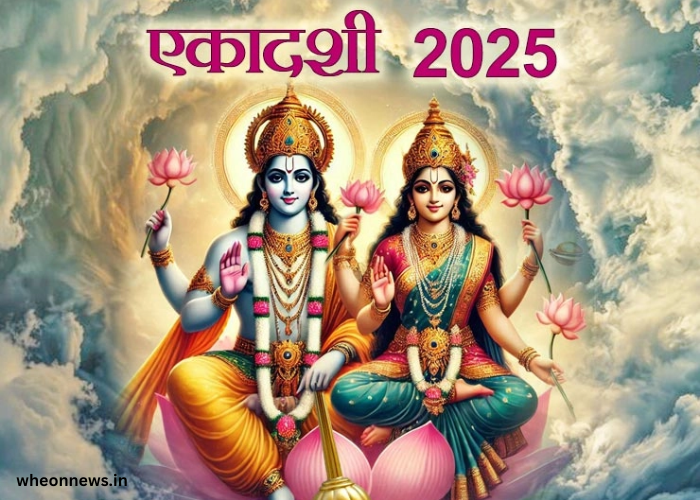
What Is The Meaning Of Gyaras In Hindu Calendar?
Gyaras kab ki hai is a phrase that connects the common person to the deeper spiritual roots of the Hindu calendar. The term “Gyaras” is derived from the Hindi word for eleven, and it corresponds to Ekadashi—the eleventh lunar day of either the bright (Shukla Paksha) or dark (Krishna Paksha) fortnight in every Hindu month.
The importance of gyaras kab ki hai lies in its association with spiritual purification and religious discipline. On this day, devotees observe fasts and offer prayers primarily to Lord Vishnu, aiming to reduce material attachments and enhance spiritual awareness. It is one of the most sacred days in Vaishnavism.
Why Do People Ask Gyaras Kab Ki Hai Every Month?
Gyaras kab ki hai is frequently searched because the Hindu calendar follows the lunar cycle, which differs from the Gregorian calendar, making dates shift monthly. As such, people often rely on religious panchangs (Hindu almanacs) or digital tools to find out the precise date of Ekadashi.
The quest to know gyaras kab ki hai is not merely for curiosity but rooted in deep faith and practice. Observing Ekadashi correctly is believed to bring blessings of good health, wealth, and ultimately, liberation. Hence, every devout person ensures they fast on the correct day.
How Many Types Of Gyaras Are There In A Month?
Gyaras kab ki hai relates to two Ekadashis every month: one during the waxing phase (Shukla Paksha) and another during the waning phase (Krishna Paksha) of the moon. These two days are recognized with different spiritual significances and names based on the lunar month.
The diversity in gyaras kab ki hai means every Ekadashi has a unique name like Nirjala Ekadashi, Vaikuntha Ekadashi, or Devuthani Ekadashi, among others. Each carries its unique story and rituals, though the core intention of fasting and devotion remains consistent across all.
What Rituals Are Followed On The Day Of Gyaras?
When people search gyaras kab ki hai, they are usually preparing for the traditional fasting (vrat) and associated rituals. On this sacred day, devotees wake up early, bathe, perform puja to Lord Vishnu, chant Vishnu Sahasranama, and avoid eating grains, pulses, and certain spices.
The purpose of following gyaras kab ki hai is not just abstaining from food but also from negative thoughts and deeds. It becomes a day of introspection, scripture reading, and bhakti (devotion), wherein families come together in reverence to elevate their spiritual discipline.
How Is Gyaras Different From Other Fasting Days?
Unlike casual fasts or regional fasting traditions, gyaras kab ki hai connects to a pan-Indian observance that transcends sects and regions. The spiritual benefits of Ekadashi are elaborated in many Hindu scriptures, making it universally respected among Hindus.
What sets gyaras kab ki hai apart is the divine promise said to be given by Lord Vishnu himself, where he declares that fasting on Ekadashi pleases him greatly and cleanses lifetimes of karma. It’s not just about dietary restraint but spiritual surrender and alignment with dharma.
When Is The Next Gyaras Kab Ki Hai Date In 2025?
Knowing gyaras kab ki hai for upcoming months is essential for devotees who plan their year around religious observances. In 2025, each month’s Ekadashi will occur on different Gregorian dates, which makes checking a reliable calendar or panchang vital for accuracy.
For those wondering about gyaras kab ki hai in the coming months, it’s advisable to consult authentic sources like Hindu temple calendars, pandit ji advisories, or online tithi trackers to stay aligned with the exact timings and duration of Ekadashi fasting periods.
Is It Necessary To Fast On Every Gyaras?
While gyaras kab ki hai brings attention to the date, not everyone is mandated to fast. It’s more about personal devotion, spiritual goals, and health capabilities. Many devotees still observe the rituals even if they do not fast completely, opting for partial or fruit-based diets.
The value of observing gyaras kab ki hai lies in the sincerity of intent. It is not a compulsion, but a sacred opportunity offered twice a month to purify one’s mind, body, and soul. Whether through full fasts or light observance, engaging with the essence of the day matters most.
Conclusion
The question gyaras kab ki hai continues to echo across homes, temples, and search engines because of its spiritual significance. With two Ekadashis in each month, this observance offers regular chances for purification, discipline, and devotion. Whether you follow it traditionally or modernly, the consistent inquiry of gyaras kab ki hai reflects the eternal devotion of the Hindu community and their unshaken belief in the power of divine timing.
